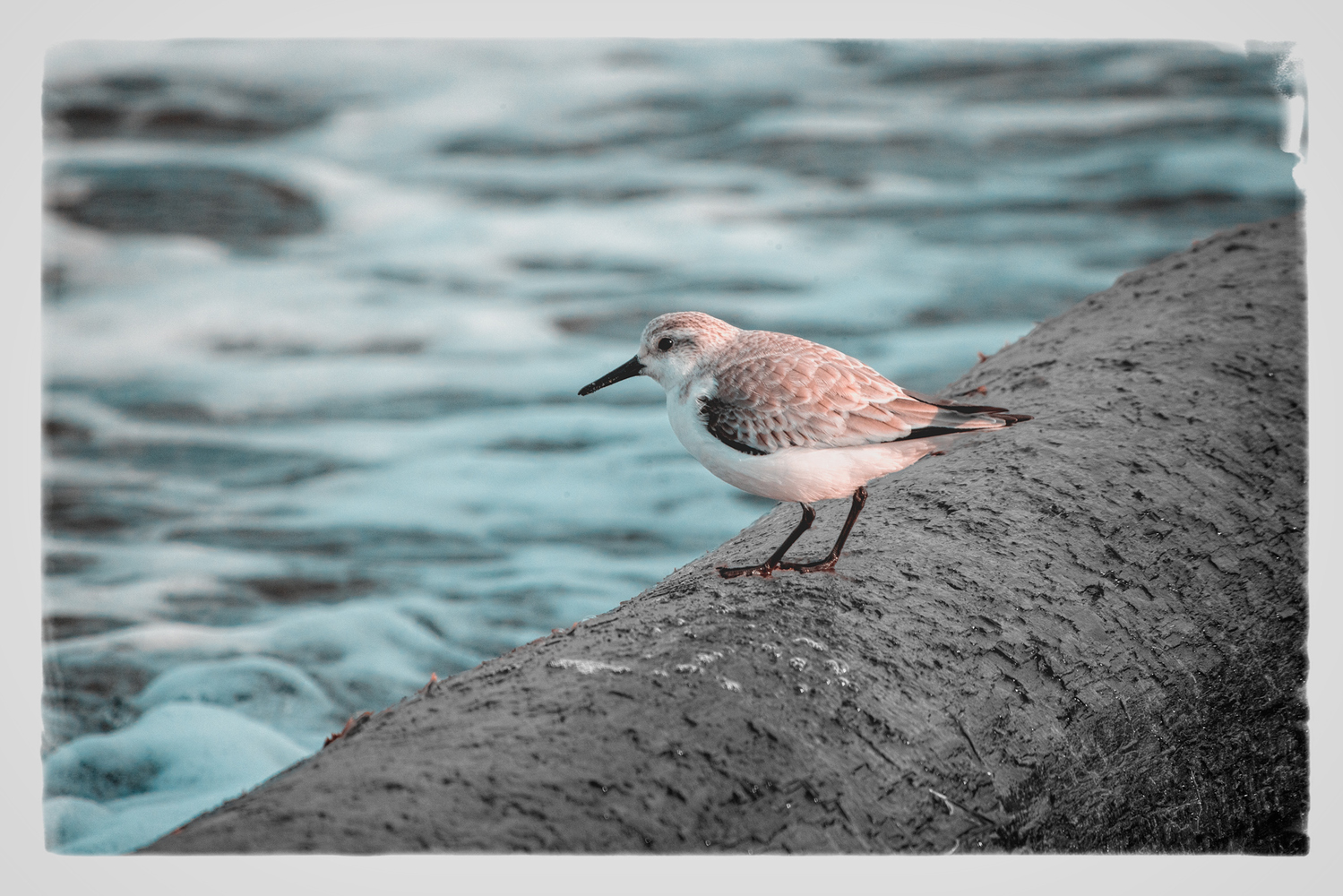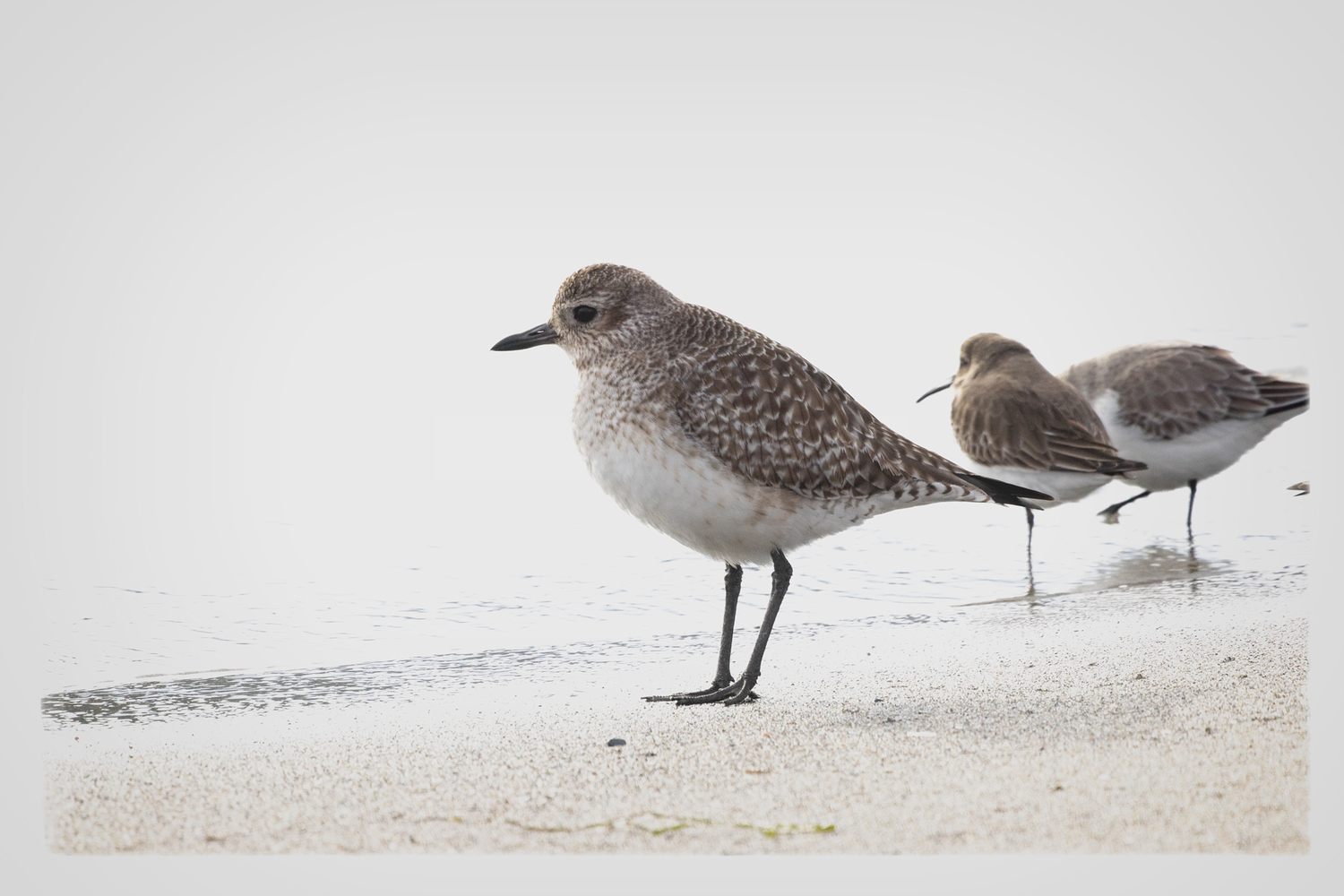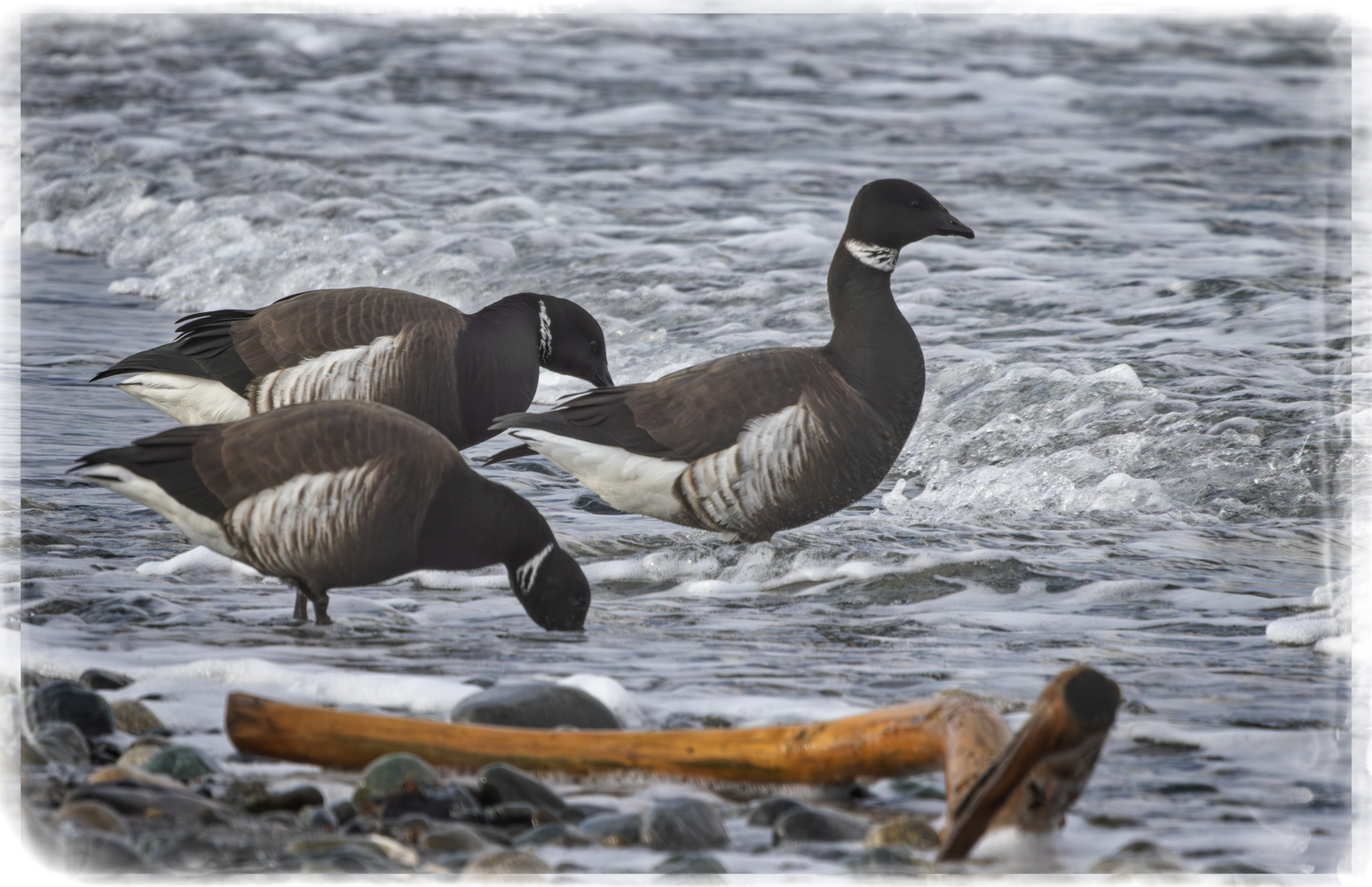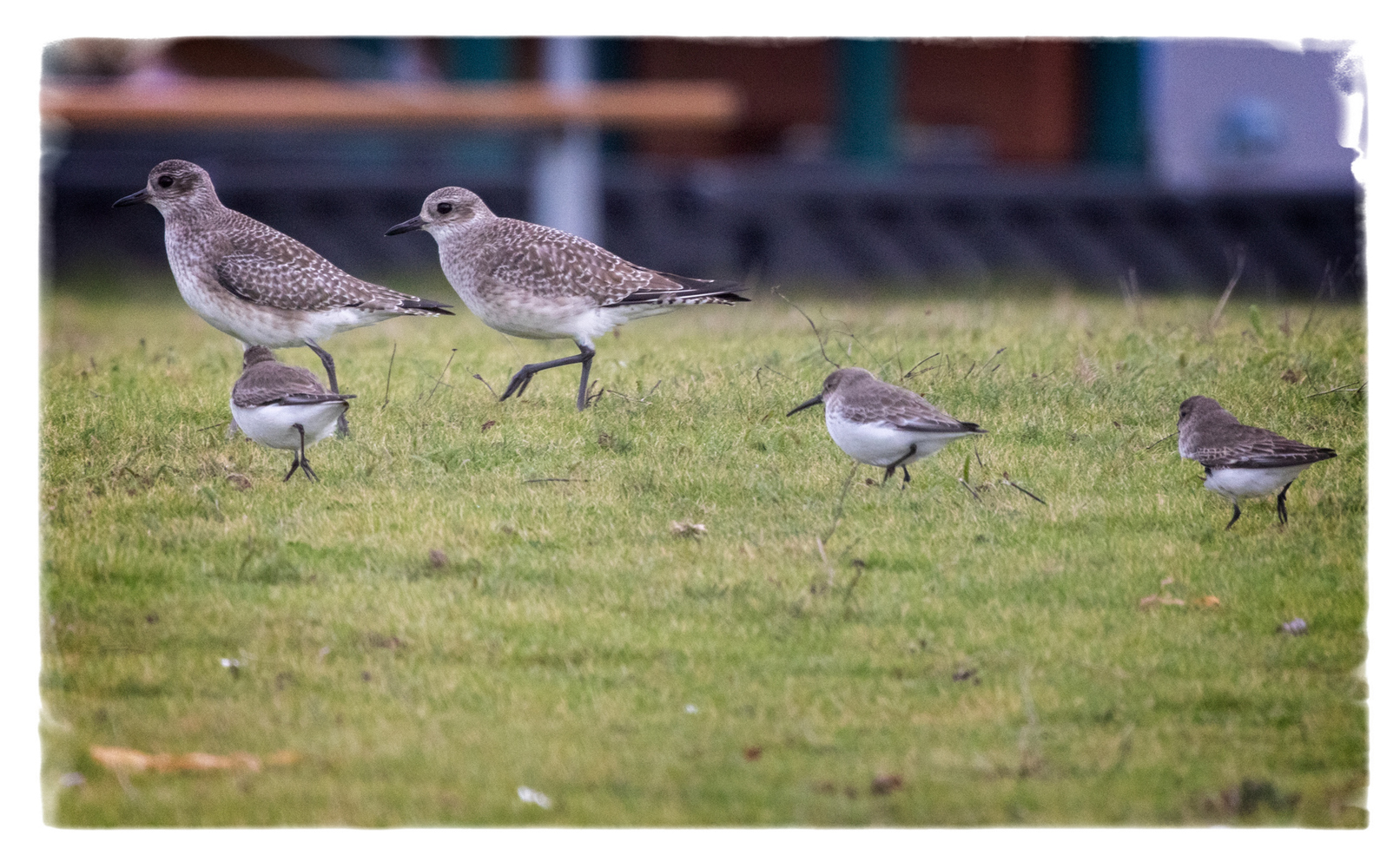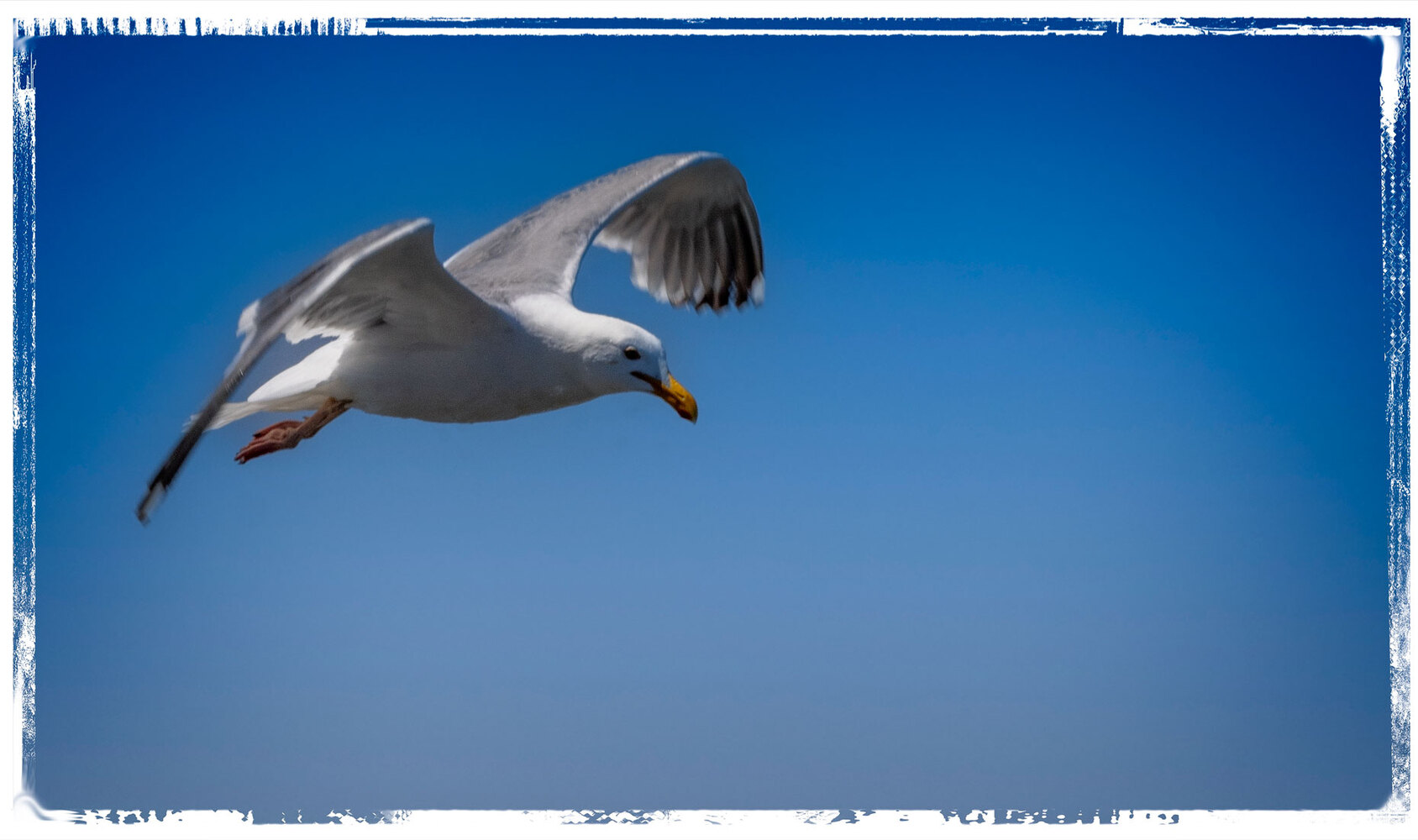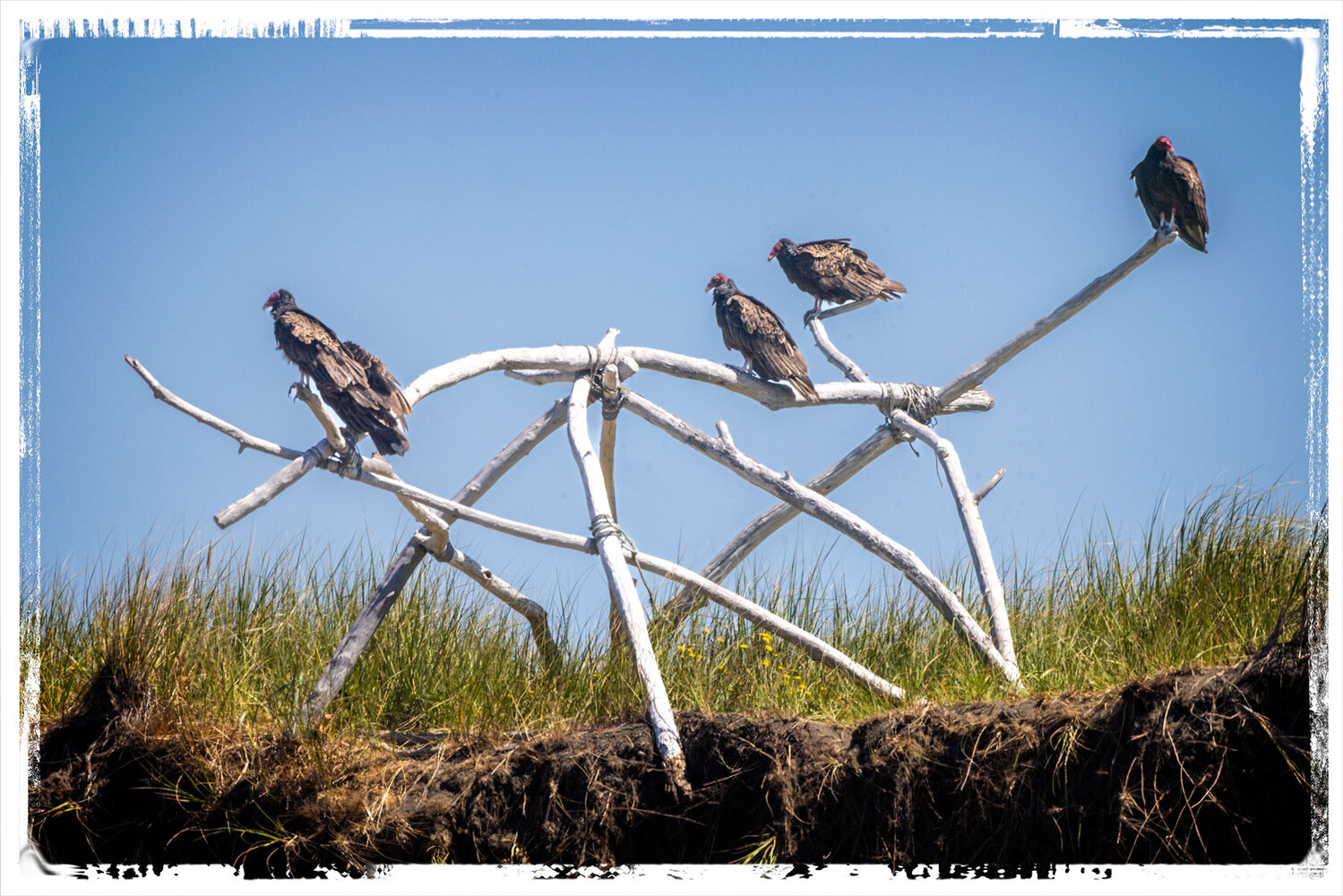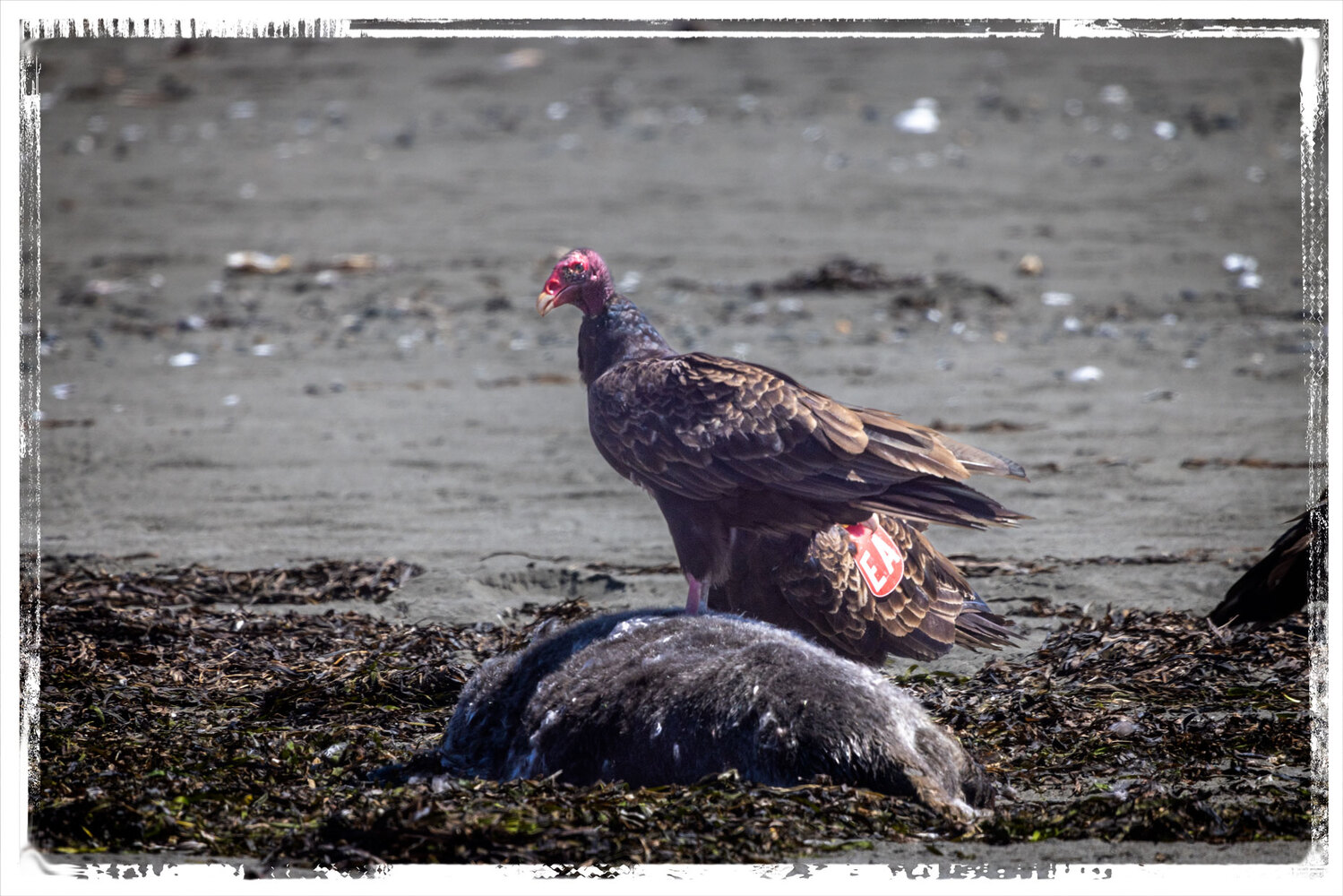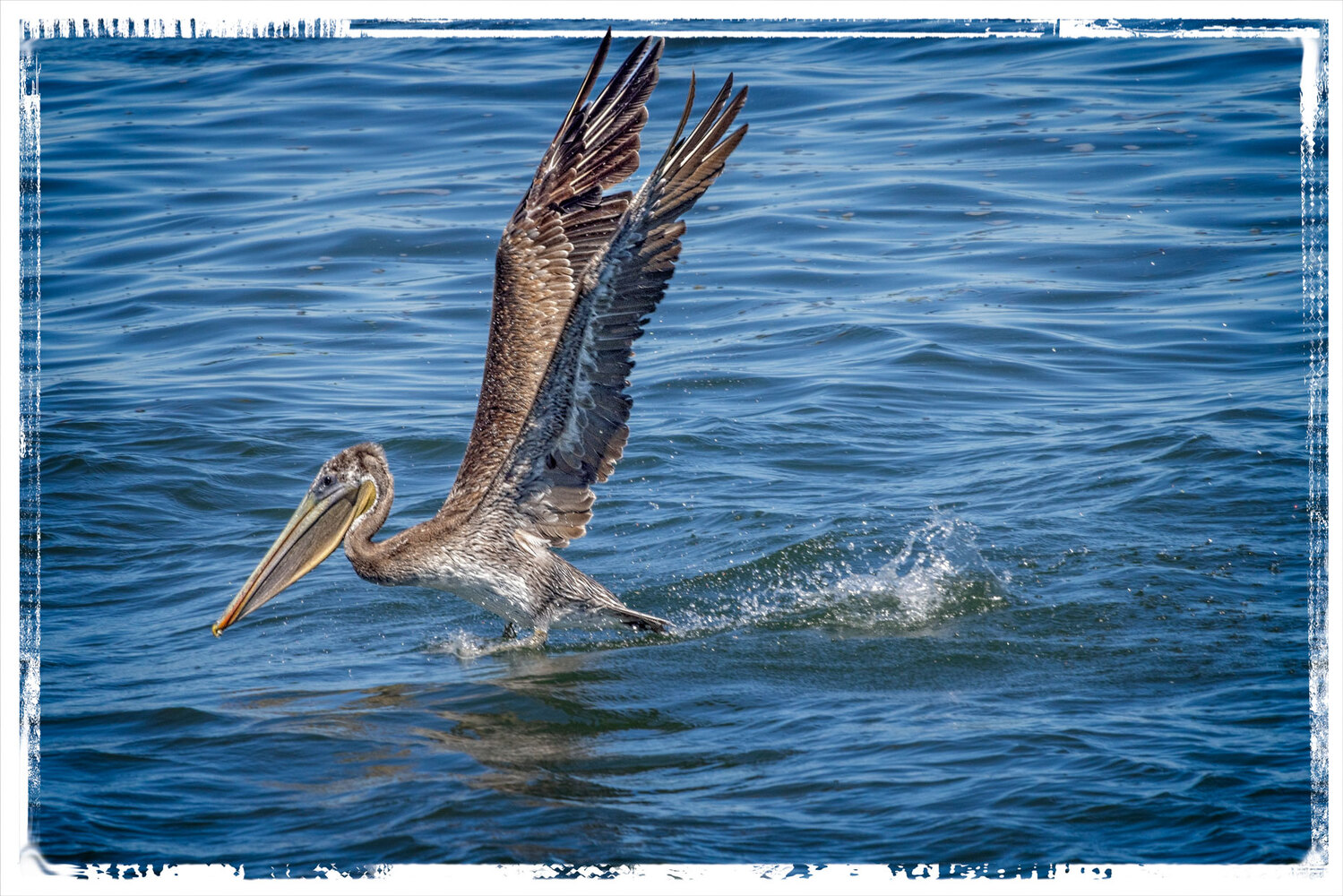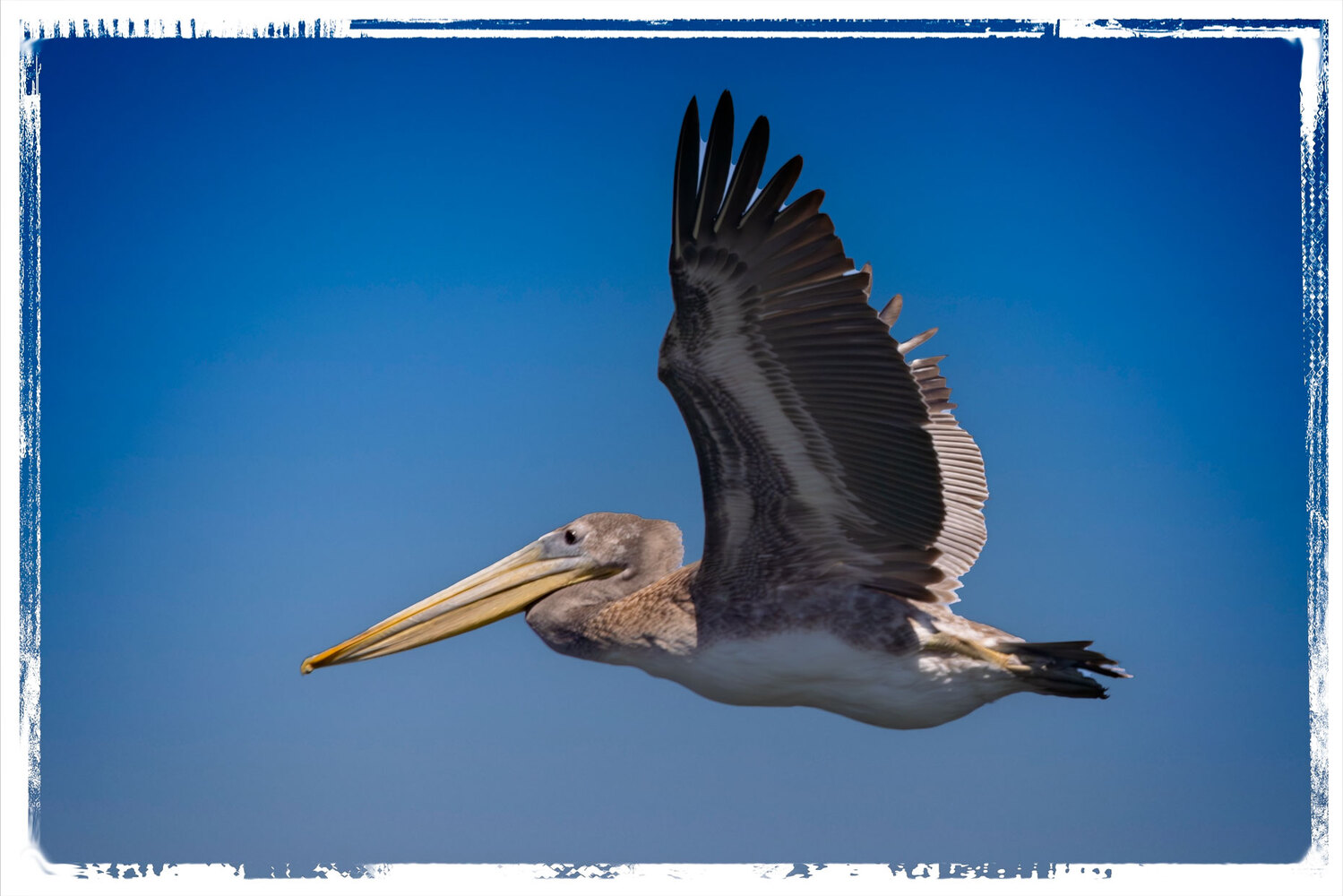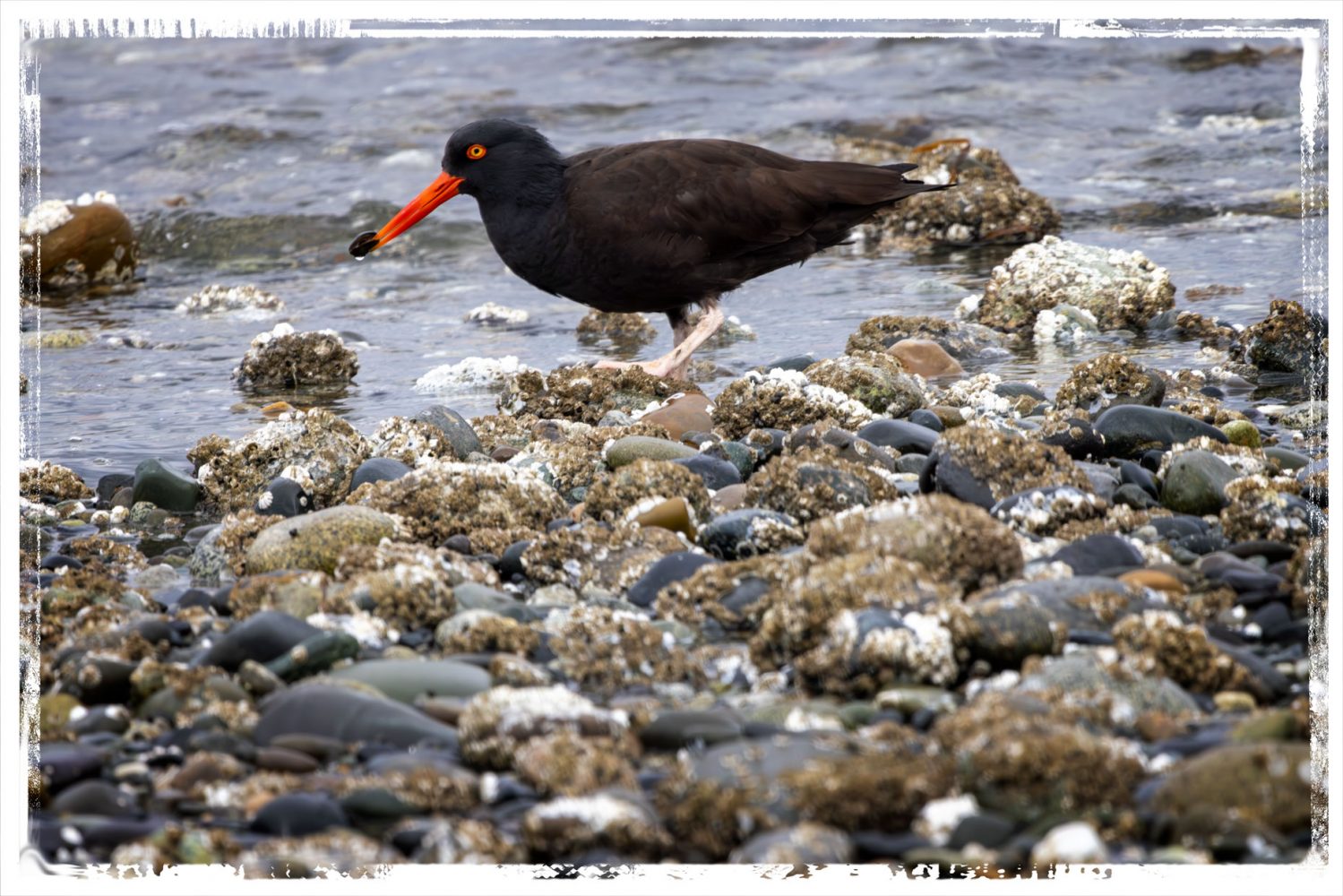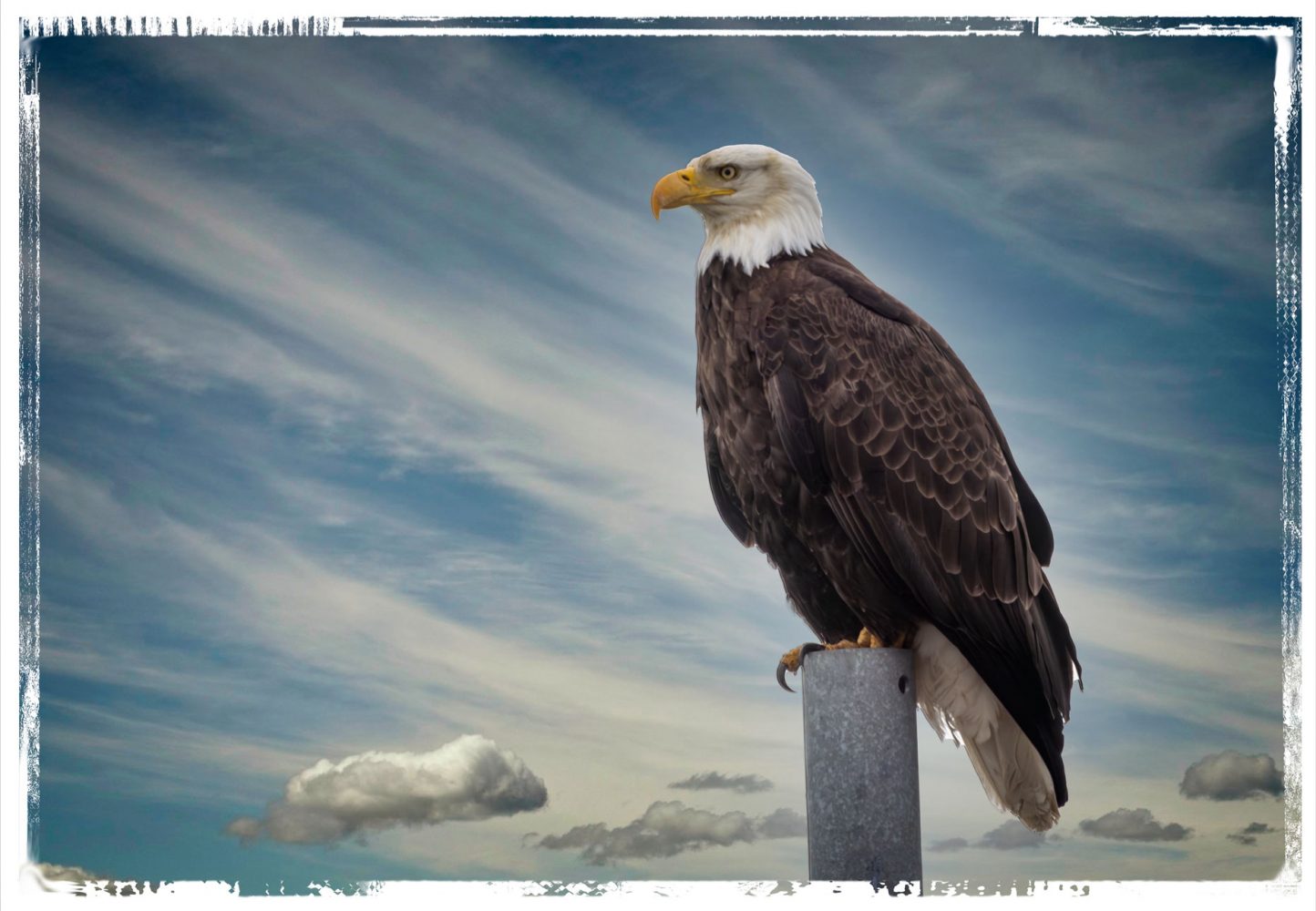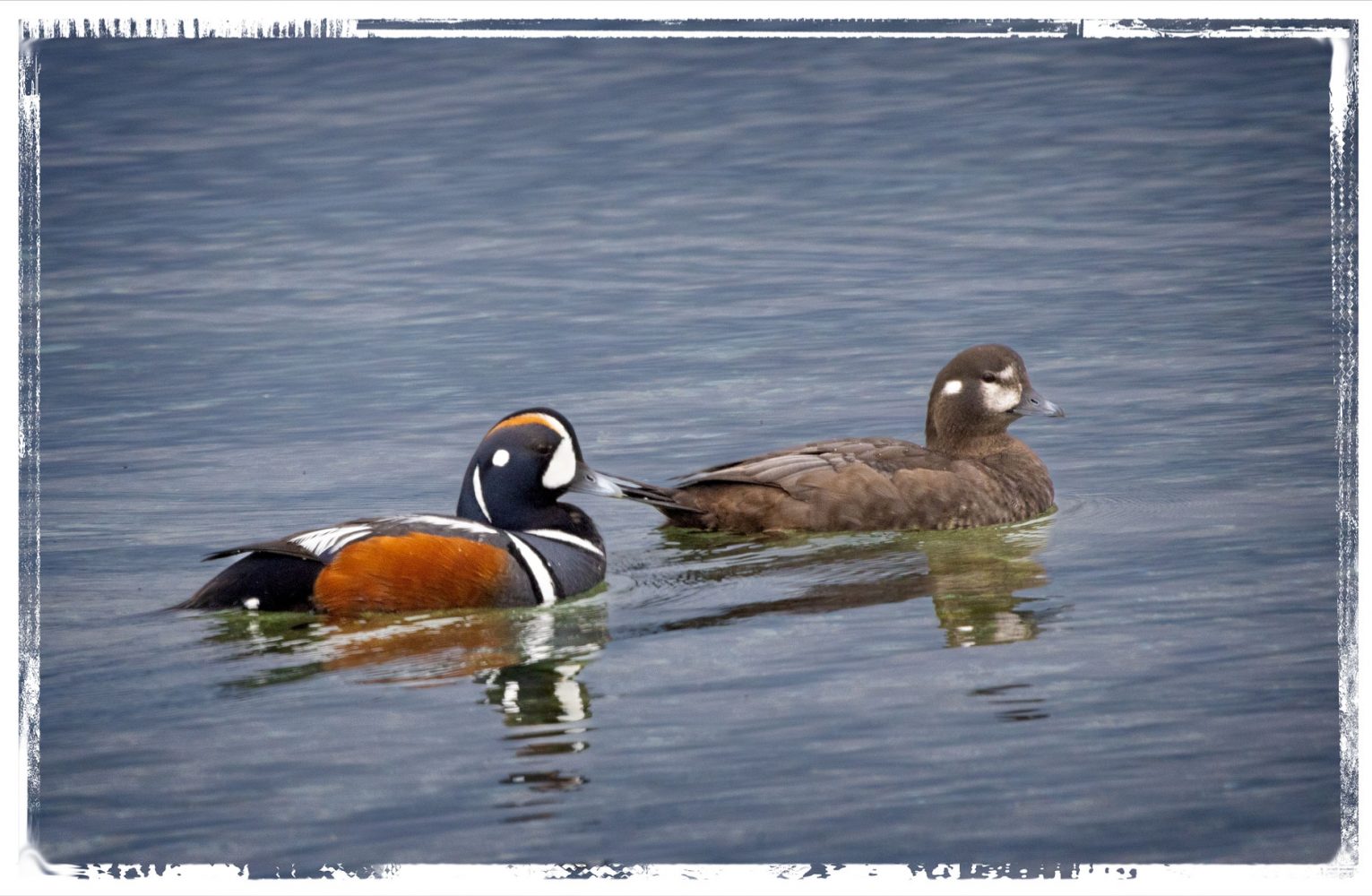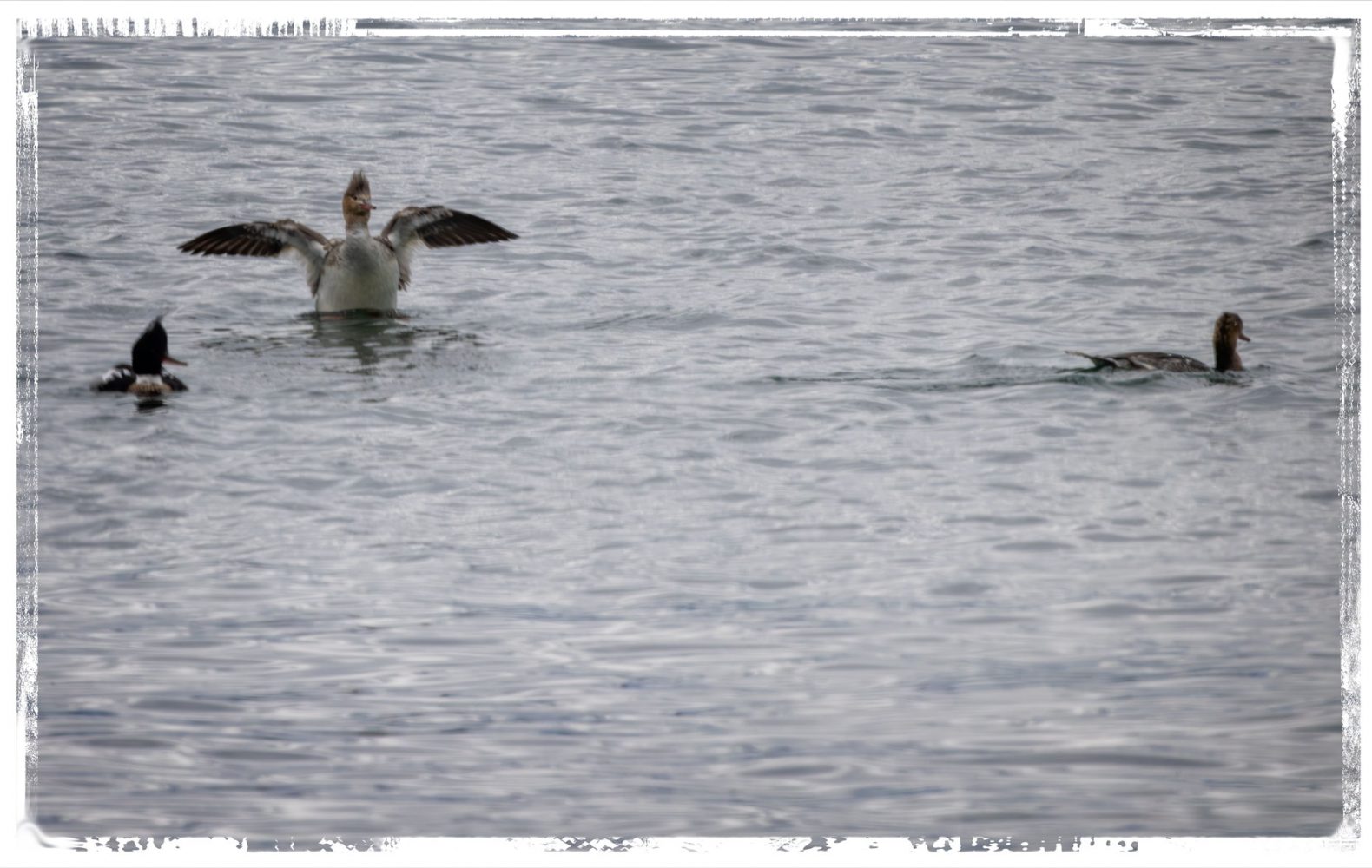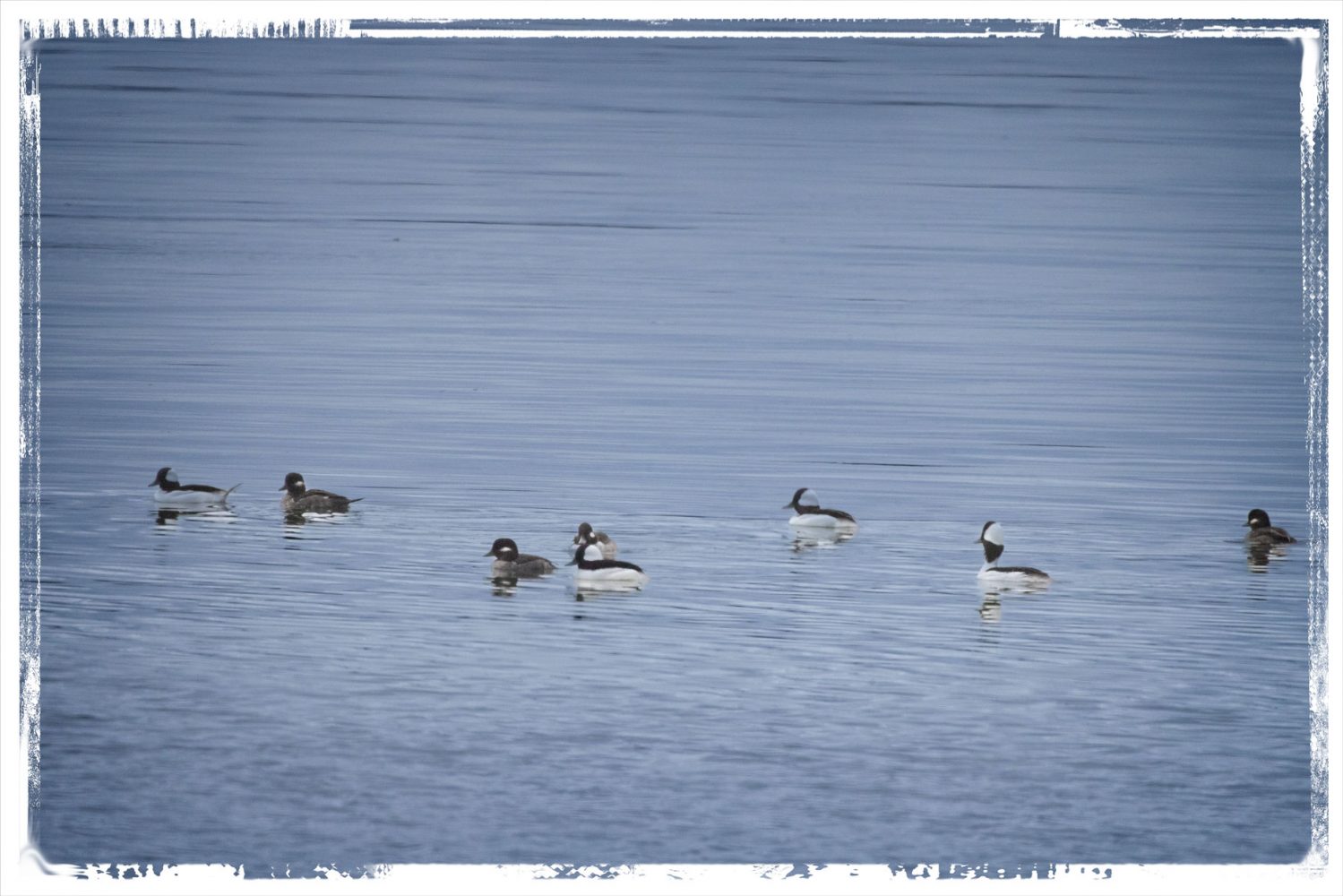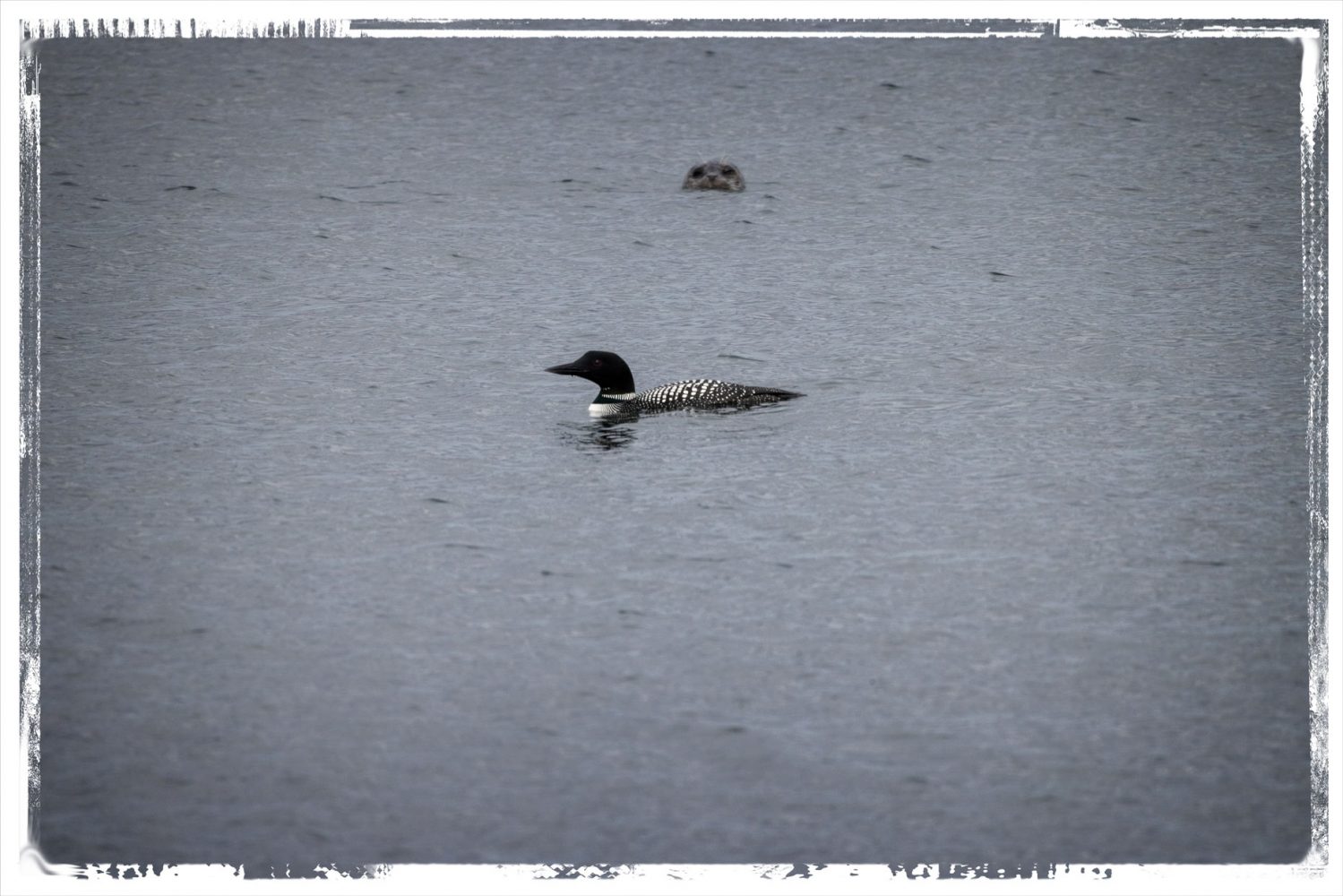When I started birding at Ft. Flagler many years ago, that was the only place I would bird. When Leslie accompanied me, we spent the rest of the day shopping for art studios and eating at favorite restaurants. In the last few years, though, we have started going to Fort Worden after eating and shopping because we often see birds there that seldom appear at Flagler
For instance, I’m more apt to see Red-breasted Mergansers, like these three that we saw quite aways offshore, at Fort Woden than at Ft. Flagler.
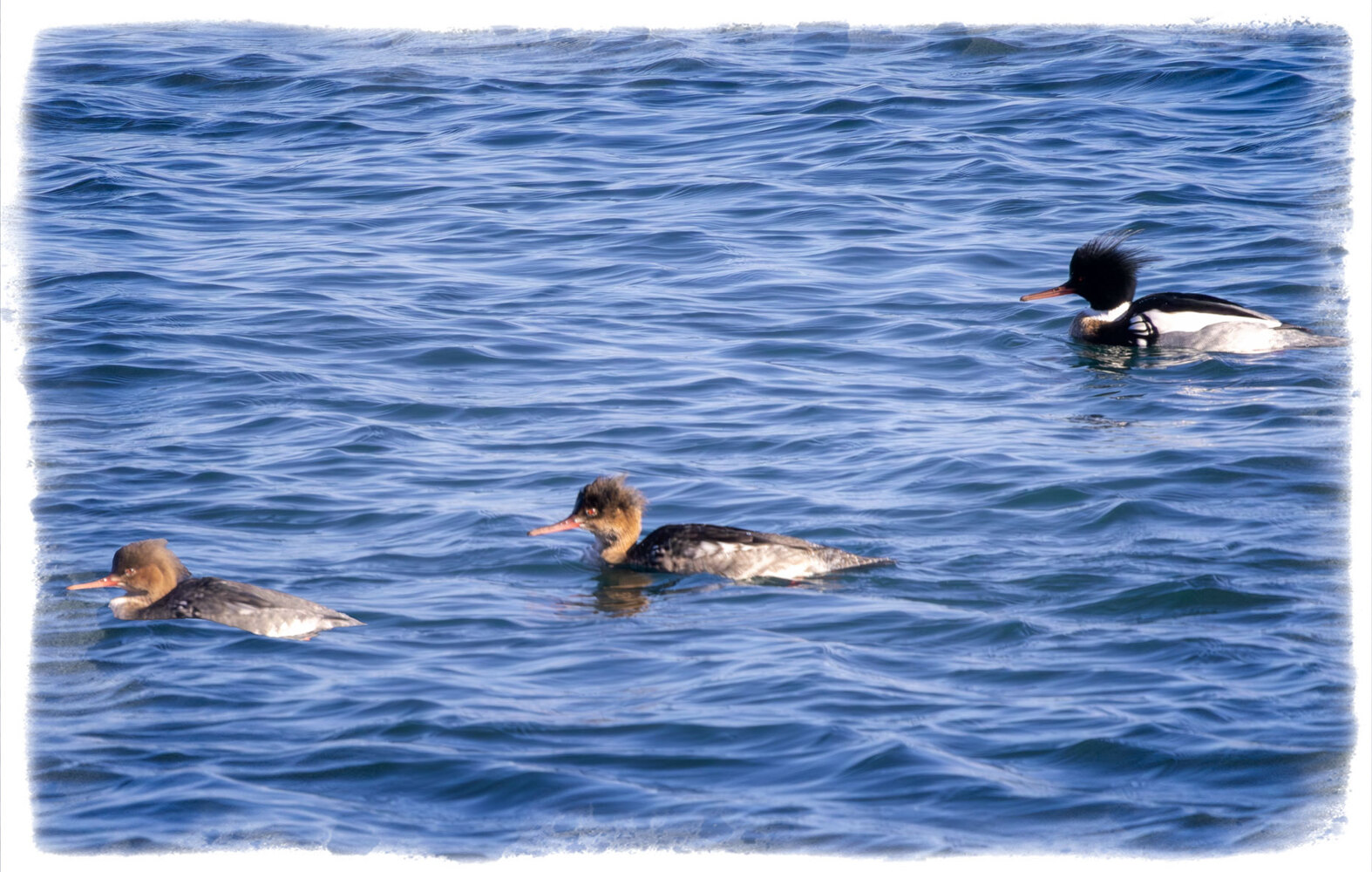
The bird on the left is a female Red-Breasted Merganser, and the one on the right is clearly a male in breeding plumage. The one in the center is harder to identify. At a distance, I thought it was a female, but when I blew it up on screen it became clear that it was actually a male transitioning to breeding plumage.
Some of my all-time favorite shots are of male, Red-breasted Merganser, partially because I seldom see them up close. Unfortunately, that was the case with these three. Despite waiting nearly twenty minutes, they never came closer than this.
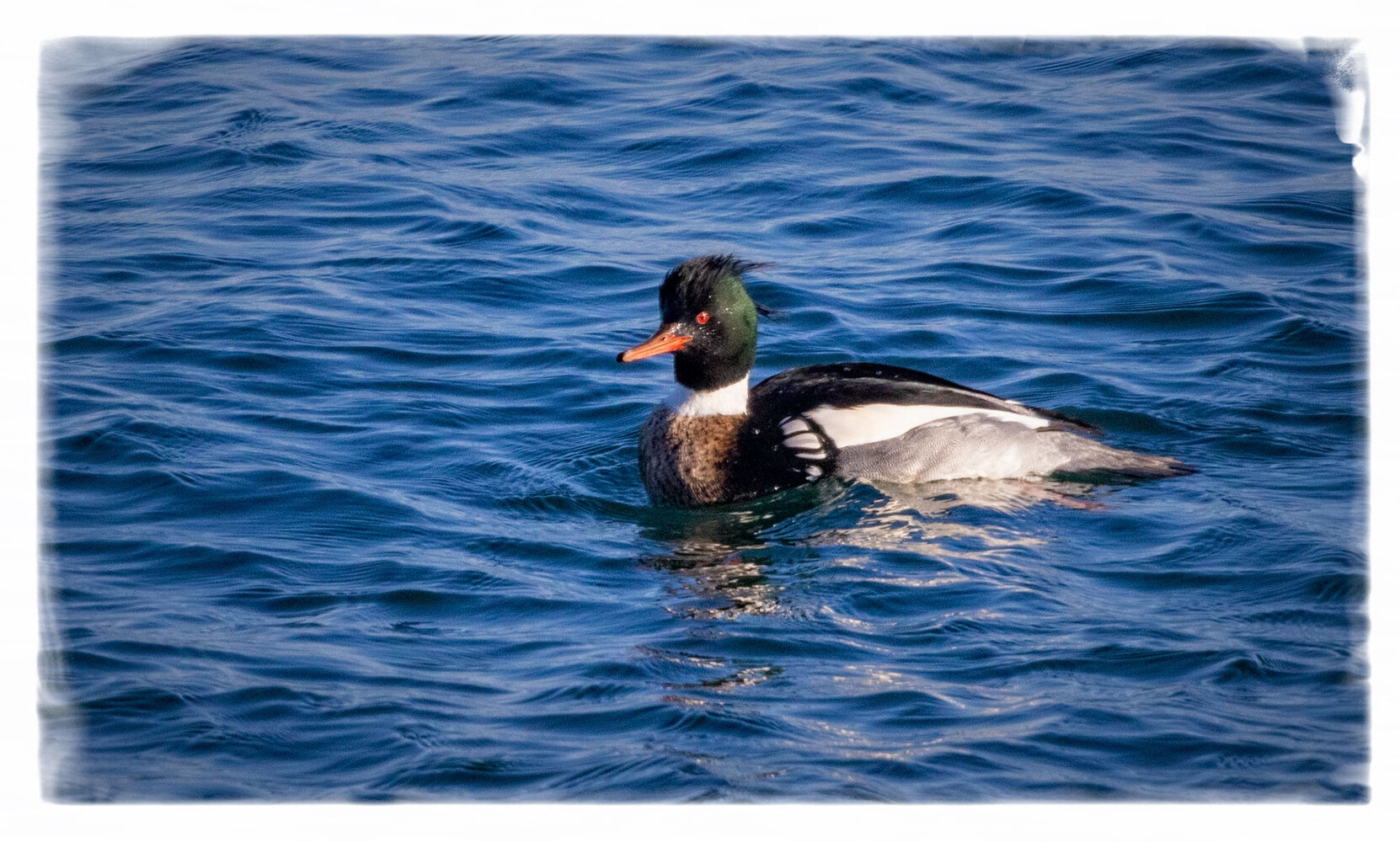
Luckily, this Double-crested Cormorant wasn’t nearly as shy. It was so close that the photo was merged from two shots because I couldn’t fit it into a single shot.
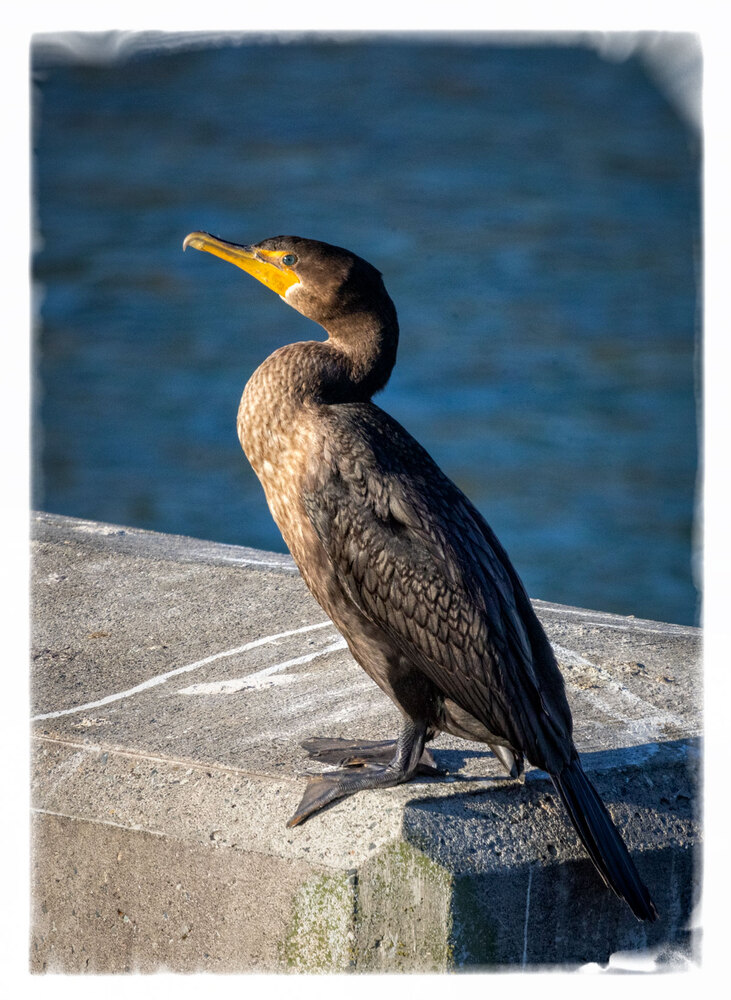
It even cooperated by posing directly in the afternoon sun.
This female Belted Kingfisher, unlike most Kingfishers, who are notoriously shy and uncooperative, was remarkably cooperative. I took this shot from the same spot I took the cormorant picture, but the sunlight was coming from behind the Kingfisher rather than shining directly on it.
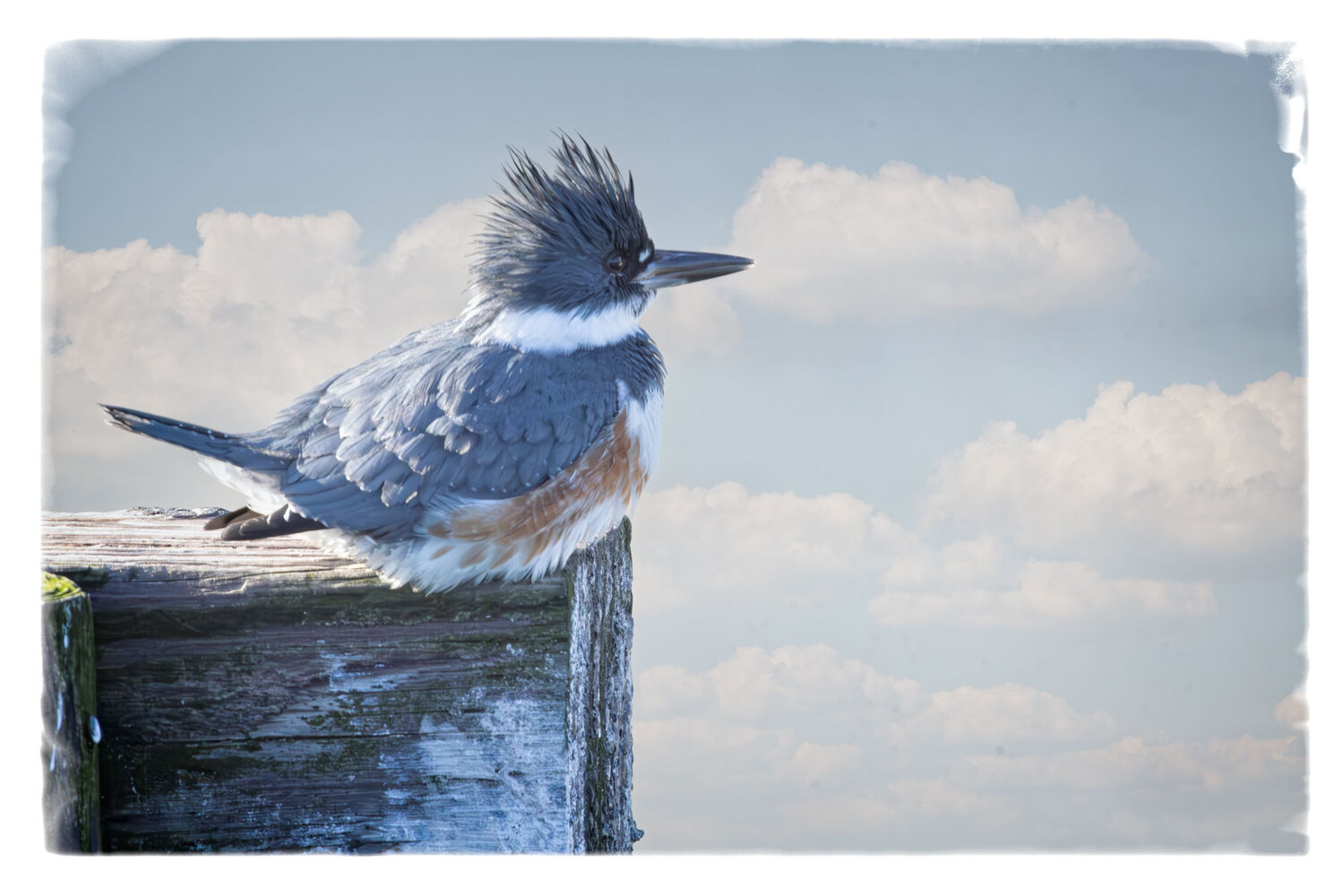
I got another shot of the same bird on the way back to the car; this time, it was sitting on the same cement wall that the cormorant had been on, and the sun was coming over my shoulder directly onto the Kingfisher.
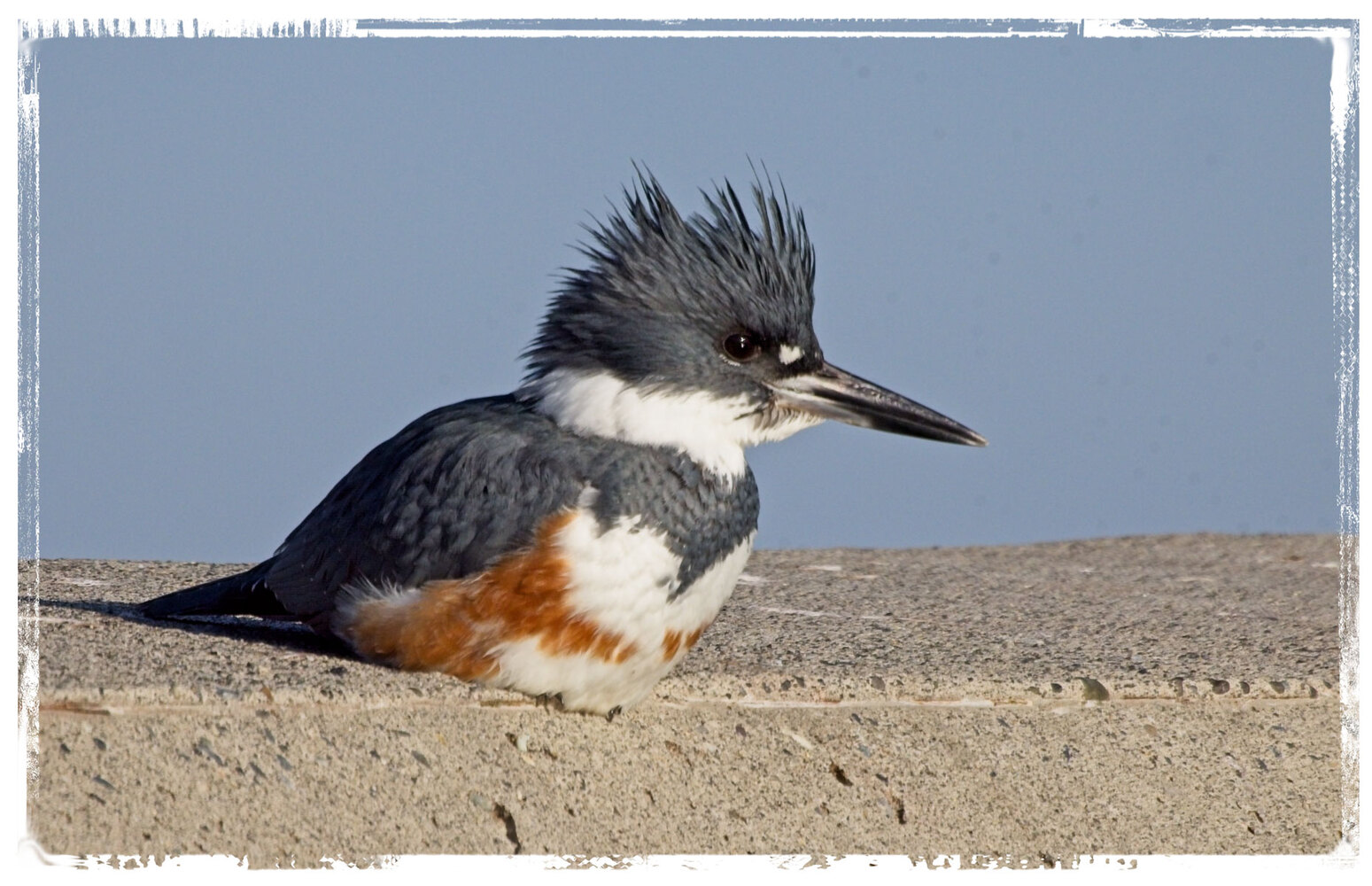
Trying to adjust the color of the two birds so they looked the same proved impossible, which reminded me once again just how critical the quality of the light is to photography.

